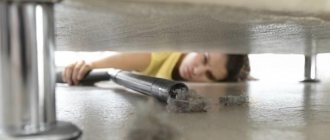Sometimes, due to psychological or physical discomfort, a pet stops defecating in the litter box. A person’s screams or poking his muzzle into the tray are ineffective in this case, but the attentive attitude of the owner will help correct the situation as soon as possible - this will be discussed in the article.
Representatives of felines are classified as affectionate, clean animals, for this reason many owners are happy to have a cat. Each pet has its own character. The owner will need a little time to help the animal form the right habits. The most crucial moment is to teach the cat to go to the litter box. If you do not do this on time, then in the near future a problem will arise, how to wean a cat from shitting in the wrong place.
Why do they do this
In order to stop your pet from shitting anywhere, you need, first of all, to understand what prompts him to such behavior. Cats are extremely clean animals. If they go to the toilet anywhere except their litter box, then there are good reasons for this. Which ones exactly?
- Reason 1 – emotional state. Animals, like their owners, experience a variety of emotions: joy and sadness, fun and indignation. They try to express their condition with their voice, gaze, touch, but most of us cannot (and often do not strive) to understand what is bothering our pet. What remains for the poor animal but to resort to the most accessible method of explanation for its slow-witted owners?
- Reason 2 – lack of attention. Automata, no matter how perfect they are, cannot replace animal communication with humans. Is it possible to love an automatic feeder, talk to an automatic waterer, or expect that the most expensive play complex, the size of half a room, will take you in its arms and begin to stroke you, saying something quietly? Of course no. Left to its own devices all day, the cat suffers from loneliness. To attract the attention of the owner and make him feel how bad she is, the cat chooses a very unique method: shitting in the wrong places. If you find a very dubious sign of attention in your slippers or on the bed, do not rush to scold the animal. It is quite possible that in this way he is trying to attract your attention, to achieve affection and love.
- Reason 3 – fear and stress. A too small kitten, left without a mother, is in a state of severe stress. Unfamiliar surroundings, unusual smells and sounds, unknown people - how can you not be scared? Don't forget about changing your diet. Many kids, having tasted unfamiliar food that is too fatty for their tiny stomachs, react to it in exactly this way - by heartily shitting on the floor.
- Reason 4 – I don’t like the tray or the place in which it is located. In most cases, cats quickly adapt to any litter box configuration. But sometimes it is purely physically uncomfortable for an animal to climb into it and jump out. It may be difficult for a small kitten to climb over a side that is too high for him or he simply does not have time to do it. Some people don’t like the grate in the tray, while others, on the contrary, can’t imagine how they can go to the toilet without it. The place where the tray is placed is also of great importance. If your kitty stubbornly goes to the toilet in a secluded corner, you should not try to re-educate her by forcing her to use the litter tray located almost in the center of the living room. Place the tray where she used her toilet. She will willingly go to it.
- Reason 5 – the filler is unpleasant. Even if your pet descends from his great-grandfather Alexander the Great, it is by no means a fact that he will deign to pay his attention to a tray with expensive modern filler. Perhaps his royal paws find it more pleasant to dig into sawdust or quarry sand. We should not forget that we ourselves sometimes have a strange tactile taste, preferring the rough surface of jute burlap to the most delicate silk.
- Reason 6 – lack of knowledge. If you receive a newborn orphan kitten, you should not be surprised that he does not understand what the tray is for. No one explained this to him! Now it is yours, and only your task. Show patience and all the teaching talent you can muster. Soon your little pet will become a rare clean person.
- Reason 7 – health problems. If an always neat cat suddenly begins to walk past the litter box or even choose inappropriate places for this purpose, we advise you to show him to the veterinarian as soon as possible. This could be a sign of serious health problems. This is often done by very old animals that have developed mental problems.
Careful observation of your pet will help you determine the reason that prompts him to use any suitable corner of the apartment as a toilet. From now on, your task is to do everything possible to direct the animal “on the right path.”
This is interesting: What to do if your cat has a bone stuck in its throat?
If a kitten shits
A kitten that goes to the toilet in a place other than where it is supposed to is a special case. As a rule, it must be taught this by its mother or another adult cat. However, in practice this does not always happen. If a kitten is orphaned early or thrown out into the street by cruel owners, there is simply no one to teach it proper behavior. Even if the baby is lucky and has a recently whelped dog looking after him, she will not be able to “explain” to him how to use the litter box. The owner will have to deal with this himself. Fortunately, kittens very quickly understand what they want from them, and after being caught in time two or three times and taken to the potty, they decide that digging into the litter is much more interesting than scraping slippery parquet floors or cold tiles.
Place your baby in the litter box immediately after he has eaten or woken up. If everything went well, be sure to praise your pet. You can tell the rest of the family about his successes. Rest assured, your little pet understands perfectly well what you are talking about, especially if you don’t forget to back up your praise with a portion of treats.
If you have a very young kitten, do not let him explore all the rooms on the first day. It’s easy to get lost in a huge (by the standards of a tiny animal) house. What if he gets a tummy ache while traveling and there’s no cozy litter box nearby? In a few days, your mustachioed pet will stop hiding in the sofa at every rustle, get used to your voice, remember where his bowl and bowl of water are, learn to confidently use the litter box, and, by the way, will grow up a little. Then it will be possible to gradually introduce him to other rooms in the house.
By following these simple rules, you will quickly train your pet to use the litter box. If, nevertheless, a certain incident happens from time to time, do not scold the baby under any circumstances! Perhaps he is not feeling well. Many kittens, and adult cats too, when they have an upset stomach, prefer to poop on the floor or in a tray without litter. In this case, it is enough to adjust the pet’s diet - and the problem will be solved.
Why does a cat shit in the wrong place: reasons
Before taking any action, you need to find out why the cat began to shit anywhere. Let's look at several common reasons why a cat shits in the wrong place:
Physical discomfort.
- With inflammatory processes in the genitourinary system, cats experience discomfort when defecating. Repeated repetition of the problem creates a negative attitude towards the litter box.
- The pet begins to look for new places to defecate, causing a lot of trouble for its owner. In some situations, this cat behavior can be regarded as a signal for help.
Finding a solution
Psychological discomfort.
- If a cat began to shit during a period of dramatic changes in the personal life of the owners, then this behavior, when the kitten shits in the wrong place, is associated with the psychological discomfort of the animal.
- Cats sense the situation in the house well and get used to the usual way of life of their owner. Home renovations, the arrival of a new family member or other living creature, cause stress in the animal, which affects its behavior.
Lack of attention.
- Like any pet, cats require attention. If the owners are ruthless towards the animal, then characteristic cats change their behavior. They are capable of holding grudges and doing mischief in order to attract attention.
- The simplest thing is to start shitting in the wrong place. The owner obviously won't like this.
It is important to eliminate psychological discomfort
New location of the cat litter.
- If your pet is used to going to defecate in a specific place, then changing the position of the toilet causes him stress. If you want to rearrange the furniture, it is better not to move the animal's tray. Buying a new litter box or changing the brand of litter also often causes a negative reaction from the animal - the cat shits in the wrong place.
- When moving to a new apartment, the cat needs to get used to the new territory. Owners must be patient and help their pet, including weaning the cat from shitting in the wrong place.
How to train a cat to use the toilet?
- To stop your cat from pooping in the wrong place, you can try teaching it to defecate on the toilet.
- It is easier to train him to use the toilet after using the litter box. To begin with, the habit of defecating without litter is formed. The amount of bulk material gradually decreases. Replace a regular trough with a mesh tray.
- At the second stage, the tray is raised daily to a certain height until it reaches the level with the toilet. It is important to take care of the stability of the structure. After a few weeks, the tray at height is removed, and a special tab with a small hole is placed on the toilet. Another option is to cut an oval hole in the toilet lid.
- If the cat is scared by the noisy sounds of the toilet , then try flushing while holding the pet in your arms. He must see that he is not in danger. If you notice that it is difficult for your cat to sit on the new device, then help her take the correct position.
Training
It will take about a month to train your cat to use the toilet after using the litter box, so be patient.
Possible causes of toilet problems
First of all, in order to discourage a cat from pooping, you need to find out the reason for the changes in behavior. These may be the following reasons:
- illness;
- stress and other psychological problems;
- I don’t like the tray, litter or location of the toilet.
If a kitten appears in the house, we advise you to immediately find out from the previous owners whether he is accustomed to the litter box and what type of litter. If the kitten is taken from the street, then you will have to train the fluffy. To do this, it is necessary to “plant” the kitten in the tray after waking up and almost immediately after eating. For the successful completion of the task, the animal must be praised and caressed.
© shutterstock
Protecting your home with special tools
The industry produces many products for correcting animal behavior. At the pet store you can choose them in the form of a spray, powder, or emulsion.
There are drugs whose composition:
- attracts to the tray;
- scares away from the wrong place;
- deodorizes, neutralizes odors;
- disinfects;
- calms during heat.
If in doubt, you can contact your veterinarian, who will advise the most suitable drug for a particular breed and age of the animal. The fact is that some of them act differently on young or old, healthy or sick, castrated or giving birth animals. Only a specialist can choose an effective and harmless remedy for a specific pet.
Cat repellent to stop them from pooping
There is a wide choice of means and methods to treat the area where cats have pooped:
- Wipe the floor, walls and corners with a weak solution of vinegar or potassium permanganate
- alcohol for processing ;
- hydrogen peroxide has disinfectant properties and is also suitable for short circuits;
- iodine solution - add up to 15 drops to water;
- if a pet shits on the beds or flowers, then the area can be sprinkled with ground pepper ;
- laundry soap eliminates odor, you need to wash the surface with the solution;
- mix baking soda
- add a bite to the water in a 1:1 ratio, wipe the surface and then cover it with soda and hydrogen peroxide, after the mixture has dried, remove it;
- place a few lemon slices ;
In addition to these methods, you can use special veterinary drugs.
In addition to folk remedies, you can use special sprays
Basically, they are available in the form of sprays. The most famous are from the company Antigadin and Emix spray.
The latter can be sprayed directly onto the cat tray and litter, as it eliminates all unpleasant odors from feces. Absolutely safe for animals and people.
There are special sprays for taming a cat to the litter box. You need to spray a small piece of paper with the product, then let your pet smell it and put it in the tray.
Popular disinfectants and taming agents:
- Hartz;
- Beafar is a large line of products in different forms: sprays, drops;
- A faithful friend - powder, detergent and spray;
- Zoovorsin - to remove odors from furniture and carpets;
- M. Kiss - spey, repeller and toilet tamer;
- Smart spray.
How to stop a cat from peeing on the floor or carpet
First of all, try to clean everything thoroughly so that there is no smell left, as cats react to it, and history repeats itself. Try putting orange peels or pepper in those places; these smells will scare the animal away from these places.
Attention! Do not use vinegar, as it will only increase the smell of urine, and this will be an opportunity for more pranks.
Double-sided tape can also come to the rescue in this difficult matter. It is necessary to glue it to the floor, in the place where the cat previously pooped. And the next time he tries to do this again, he will stick his paws, feel discomfort, and refuse to visit these places.
Also, a cat will never do indecent acts where it smells itself. Wipe its face and fur with a dry cloth, then use it to walk over the carpet where the animal previously left puddles. In this way, the pet will quickly understand that it is forbidden to shit in this place.
Aids
If you were unable to stop your cat from crapping in the wrong place using the suggested remedies, you should try special medications that are sold in veterinary pharmacies.
The most popular domestically produced chemicals:
- “Don’t shit! Don't tag!";
- Antigadin;
- “Shit? No!";
- Fresh. Unlearning to shit.
Among the foreign-made products, the following drugs can be noted:
- Beaphar Stop-it Cat;
- Happy Cat.
It is important to note that they must be used in strictly limited dosages in well-ventilated areas, otherwise their smell may cause discomfort in people.
You can try to neutralize the place where the animal went to the toilet using essential oils, but they are quite expensive and are not always effective. However, if you have an extra bottle lying around, it doesn’t hurt to try.
This is interesting: Which cat breed is best for an apartment?
Correction of kitten behavior
So, if we are talking about a kitten, the pet needs to be taught, and not retrained. In this case, folk remedies that have been proven over the years work great. Monitor the kitten once before it urinates. Don't scold! Blot the puddle thoroughly with paper or cotton cloth. The crime scene must be washed and treated with a chlorine-containing preparation. To be safe, use special repellent sprays.
Place your kitten's litter box in the same room where he went to the toilet for the first time. Pour a little filler and place the same paper (fabric) in the tray. Observe the kitten, as soon as he begins to worry and look for a place to relieve himself - carefully take him to the tray and calm him down. Again, for reliability, you can use special sprays.
What smells repel cats?
Cats are very sensitive to odors, so you can treat the damaged area with a certain product or solution so that in the future the pet does not relieve itself there.
Citrus
Cats can't stand the smell of citrus fruits.
The aroma of citrus fruits is disgusting.
You can place orange or lemon peels in corners that are off-limits to your pet. For furniture, a polish with a citrus scent is suitable.
Vegetables
Cats don't like the smell of garlic and onions. To scare away the animal, you can grate these vegetables and place them in the right place, or fill them with water and wipe the surfaces with the prepared solution.
Perfumery
Pets are most sensitive to strong and persistent aromas. But here everything is individual. In addition, to scare away you need to use a large amount of perfume.
Essential oils
Some essential oils are disgusting to animals. Rosemary, lavender, mint, and citranella extract are great for these purposes. Oil is added to water and dripped onto the desired place so that the cat does not go there again.
Essential oils can be mixed with grated citrus peel or coffee grounds; such compositions will scare away your pet.
Some essential oils are disgusting to animals
Herbs
Cats are sensitive to some herbs.
To repel, you need to prepare a decoction: pour boiling water over the leaves of rosemary, cayenne pepper, and lavender and let it brew. Using a spray bottle, spray onto desired areas.
Pets do not tolerate and are afraid of the aroma of fresh dill.
Some spices repel cats: mustard, coriander, cinnamon, ground pepper, cumin.
Chemical substances
Cats have a negative attitude towards various chemicals: varnishes, shampoos, construction chemicals, detergents with a strong smell. You should use all this carefully so as not to irritate your cat’s nasal canals.
Vinegar
Vinegar occupies a leading position. A small drop of this product is enough to repel your pet.
Alcohol
Cats cannot tolerate the smell of alcohol and alcoholic products
Cats cannot tolerate the smell of alcohol and alcoholic products.
You can wipe surfaces with alcohol, and a glass of alcohol left on the table overnight will discourage your pet from climbing on it.
If your cat begins to ignore the litter box and shits in different places, find out the reason and eliminate it, treat the favorite place with one of the listed products to remove unpleasant odors. For prevention purposes, use either natural repellents or special means for this purpose.
How to stop a cat from shitting on the sofa
If a cat begins to shit on the sofa, the reasons may be different, but you should wean him off this quickly, otherwise your pet’s stay in the house will become unbearable for you. When you leave home and your pet is left alone, put something rustling on the sofa. This sound will scare him away, and he will be afraid to go there again.
As described above, you can glue double-sided tape, the cat will stick and this will push him away.
It is also possible to spray the sofa with perfume, thus letting the cat know that this is your territory, since they react to odors.
Cats cannot tolerate lavender - use powder or fabric softener with this scent when washing and cover the sofa with a washed blanket. Buy a bottle of lavender oil and apply a few drops to your pet's favorite places.
Traditional methods
The most popular way to stop a cat from shitting anywhere is to treat the floor, furniture, shoes with vinegar, a solution of potassium permanganate, iodine, and hydrogen peroxide. You can use baking soda and laundry soap. Alcohol is suitable for treating smooth furniture.
- The floor, walls, corner where the cat shits are wiped with a weak solution of manganese and vinegar.
- Animals do not like the smell of alcohol, so it is recommended to wipe the dirty area with alcohol.
- Hydrogen peroxide is known for its disinfecting effect, so it is suitable for washing away cat “tricks”. Peroxide should not be used on fabric, varnished or polished items.
- Iodine solution is also suitable for treating surfaces contaminated by animals. Add 5 to 15 drops of iodine per liter of water.
- If a cat shits in flowers or in garden beds, you can sprinkle the ground with ground pepper to prevent the cat from shitting.
- If you soap a cloth with laundry soap and wipe the area where your pet left the “mark,” the smell will disappear.
- Among the available products used to remove cat odor is regular baking soda. It is mixed with water until a paste forms and applied to the damaged area. After drying, the powder is removed.
- The advice to use bleach or bleach does not always give the desired result. Some individuals of the cat breed are not repelled, but attracted by this pungent smell. In addition, bleach can be harmful for people living in an apartment.
- If you treat the area with a combined composition so that the cat does not shit, the result will be guaranteed. First, wet the surface with a solution of vinegar and water in a 1:1 ratio and sprinkle soda on top. This mixture is poured with a small amount of hydrogen peroxide. After complete drying, the powder is swept away.
How to use folk remedies
Cat urine amber has a persistent aroma. It attracts the animal on a subconscious level. Therefore, the beloved again and again goes about “her business” to where the urine spirit is. If it is not possible to place a pot in this place, then this area must be treated so that the female is no longer attracted to the toilet there.
To do this, thoroughly wash the floors and marks with laundry soap and vinegar.
Apple cider vinegar is often used to treat tags because it has a more persistent odor. They also repel with the aromas of fir, garlic, iodine, alcohol, and potassium permanganate.
Cats also don’t like citrus amber. Therefore, you can place fresh orange and lemon peels in the corners, under the bed.
Important: do not use bleach! Because kitties love the chlorine smell; it serves more as a bait than as a repeller. Yes, chlorine removes the “fragrance” of urine, but its solution is used to treat the room only when the animal no longer lives there
For older animals, when veterinary care is powerless and no means can save you, use diapers. This method will protect the apartment from unpleasant odors and give peace of mind to all family members.
If Kisulya has chosen a flowerpot for toilet purposes, then show resourcefulness: use toothpicks, plastic grates, i.e., arrange a “cute” barrier for the prankster.
Cat Urine Odor Eliminators
To prevent your cat from defecating again in the wrong place, it is necessary to completely eliminate the smell of the animal.
How to remove the smell of cat urine? You can use improvised and special tools.
Oxidizing agents will help eliminate the smell of pet feces:
- hydrogen peroxide;
- iodine solution – 10-20 drops per liter of liquid;
- water with lemon juice;
- concentrated soda solution;
- alcohol solution.
Getting rid of the smell
Professional products to help remove the smell of cat urine:
- DezoSan and Zoosan
- UrineOff
- Complete Pet Stain&Odor Remover
- Pet Stain&Odor Remover
- Bio-Vax toilet deodorants.
High-quality chemical products must contain enzymes. You can identify stained areas using an ultraviolet lamp. This way you can definitely stop your cat from shitting in the wrong place.
Features of smell in cats
Cats use their sense of smell not so much for hunting as for social interaction.
Urine, secretions from glands located on the muzzle and near the anus, sweat left by paws on the path - all this carries for the animal a lot of detailed information about other cats living in this territory: their claims to dominance, readiness to mate, state of health , moving around the territory, etc.
60–80 million olfactory cells help cats perceive a subtle and rich range of aromas (humans have only 5–20 million). In addition, these animals have a special organ called Jacobson's tube: two narrow canals that begin behind the upper incisors. To sense the smell with their help, the cat usually slightly opens its mouth.
A cat's olfactory system is different from a human's.
There are several versions about the main purpose of the Jacobson tube. In particular, it is assumed that animals with its help:
- “analyze” the chemical composition of food;
- looking for sexual partners;
- detect subtle chemical changes in the air that anticipate cataclysms such as earthquakes or volcanic eruptions.
It is not surprising that a cat can clearly perceive odors that a person cannot even smell, and that some aromas that are pleasant to humans may seem too harsh and strong to the animal.
What not to do
Remember: being aggressive towards an animal is a surefire way to achieve nothing. So be patient. Your cat should feel safe in your company. Try not to show signs of impatience so as not to frighten the animal, but at the same time try to show him who is boss.
So, what should she do?
- Yell at the cat;
- drag to the tray;
- poking one's muzzle into feces.
At best, the response to such actions will be an angry hiss. At worst, the animal will become embittered and begin to deliberately throw “mines” at you.
If you see that an animal is starting to settle in the wrong place, try not to scare it away. A frightened cat may start to run away, as a result of which not only will you not achieve any benefit from the educational measures taken, but you will also be cleaning up feces throughout the apartment. The only correct step is to quickly but carefully grab the cat and transport it to the litter box before it has time to come to its senses.
If you have encouraged your cat to go to the toilet correctly with treats, you should not suddenly refuse them. Otherwise, the cat may take up the old habit, deciding that there is no point in going to the litter box. Gradually reduce the portion of food, and then switch to simple stroking and gentle words.
Under no circumstances should you throw an offending cat out into the street!! This can only alienate you, as a result of which the animal will become even more disobedient and obstinate. For the same reason, there is no need to deprive the animal of water and lock it in a separate room.
Also pay attention to where exactly the tray is located. It's not worth putting it:
- in a noisy crowded place;
- in open space;
- in a cold place.
If your cat finally agrees to use the litter box, do not under any circumstances replace the litter with a cheaper alternative, as the animal may refuse to use it again after seeing an unfamiliar substance inside.
Examples of different methods depending on location
Depending on the place where the cat goes to shit, different possible options should be used.
How to wean yourself so as not to shit in the corner
To do this, it is enough to first treat the surfaces of the corner and floor with the disinfectants listed above. Next you should apply a repellent spray.
On the floor
You can stick pieces of double-sided tape on the floor. The animal’s paws will stick, which will cause him bewilderment and discourage him from visiting such a place next time.
On the carpet
You should treat your carpet with citrus products. The shell of oranges and lemons, due to the content of essential oils, begins to repel the animal with its aroma.
And others
Misbehavior can be prevented by doing the following:
- choose a toilet that your pet will like;
- take into account the size of the animal when purchasing a tray;
- place the tray in a secluded place with constant access;
- the feeding area should be located away from the cat’s toilet;
- there should be no strong odors in the vicinity of the tray;
- You should wash the tray more often.
Leadership problem
Another common reason that a pet starts “walking” anywhere is the hierarchy in the house. Living with people, the animal perceives all the inhabitants of the home as one large (or small) flock. This may hurt your feelings, but most often the cat or cat considers himself the leader in this pack. Even if the cat does not make important decisions at the family council, his “rule” has a different character. It is enough for Murchik to simply observe his household members to keep his ego at peace.
But it happens that one of the inhabitants of the “pride” - a person - suddenly begins to behave inappropriately. For example, he increasingly sits on the chair favored by the furry leader. Or he treats the mustachioed dictator to tasteless food. The cat begins to “put things in order.” In the world of cats, odors are of greatest importance, so the pacification of the offender is carried out by eliminating his smell. The cat wets the owner's shoes or places a “mine” on the bed, which previously smelled like the owner. Now the cat is in charge.
If the animal not only does not go to the litter box, but shits on your personal belongings, take a closer look - perhaps you are infringing on his cat’s pride. Build personal relationships before dragging your cat around in a puddle.
Expert advice
Among other tips, the most popular are the following:
- You should take a rag, wrap it around the animal’s neck and rub it in the corners where it often craps. Where it smells of its pheromones, the cat will not make a toilet.
- In places where the cat shits, you should place small bowls of food.
Expert advice - understand the reasons
The easiest way is to put a piece of toilet paper soaked in animal urine in the tray. This will clearly show where the toilet is. The cat will try to bury the paper. When digging, a reflex will work: if you dig a hole, why not use it? This way, the cat can get used to the litter box. But in this case, you need to make sure that the tray is in the right place. Carpets should be removed while the cat is litter training.
Important! Punish a pet only when caught at the scene of a crime, and not after some time.
It is possible to solve problems, but it requires attention and patience on the part of the owner. The moment a person takes a kitten into his home, he must immediately begin to accustom the animal to the tray. This must be done in such a way that the kitten learns to relieve itself in the right places. The animal should not be subjected to harsh training methods, as this will not bring any results. Usually kittens quickly get accustomed to a tray with a special filler. If an animal that has reached sexual maturity satisfies its needs in the wrong place, this may be a sign of possible health problems or marking the boundaries of its territory. In any case, you must first establish the reasons why the animal does not behave as expected, and then eliminate them.
What an attractive tray it is
It's no secret that cats are distinguished aesthetes. Not only will they not eat from a dirty bowl, but they will also not go into a dirty potty. What should an attractive tray look like?
Requirements for a cat litter box:
- Purity. You definitely need to take care of the cleanliness of your cat's potty. You need to remove traces of your cat's activity regularly. You also need to wash the tray itself regularly. It is not recommended to use aggressively smelling products - the cat may refuse to visit the restroom.
- Calm. The cat will not do its business if the latrine is noisy and restless.
- Tray size. The pot should be spacious and not too deep. The cat should be able to bury the result of the work, and also be able to go into the “restroom” completely.
There are a huge variety of litter boxes for cats. Various designs provide for the selection of a toilet according to the size of the animal and the preferences of the owner.
If filler is used in the tray, the pot must have a special mesh. Thanks to this “layer” the cat will step on the grate with its paws and will not spread the litter around the house.
The sides of the tray should be of sufficient height so that when the cat tidies up, the litter does not end up on the floor.
If you plan to use a tray without a mesh, then be prepared for:
- The smell that will seep into the room;
- Filler carried by paws outside the toilet;
- Possible whims of the cat if its claws cling to the mesh.
However, this design has its advantages. The tray is easy to wash, and the filling changes very quickly. There are also no additional parts that would be difficult to disinfect.
There are closed models that look more like a house. If the cat can stand up to its full height in such a toilet, then it will definitely like the potty.
More advanced models offer self-cleaning. That is, the effort required to care for such a toilet will be minimal.
How to use folk remedies
Cat urine amber has a persistent aroma. It attracts the animal on a subconscious level. Therefore, the beloved again and again goes about “her business” to where the urine spirit is. If it is not possible to place a pot in this place, then this area must be treated so that the female is no longer attracted to the toilet there.
To do this, thoroughly wash the floors and marks with laundry soap and vinegar.
Apple cider vinegar is often used to treat tags because it has a more persistent odor. They also repel with the aromas of fir, garlic, iodine, alcohol, and potassium permanganate.
Cats also don’t like citrus amber. Therefore, you can place fresh orange and lemon peels in the corners, under the bed.
Important: do not use bleach! Because kitties love the chlorine smell; it serves more as a bait than as a repeller. Yes, chlorine removes the “fragrance” of urine, but its solution is used to treat the room only when the animal no longer lives there
For older animals, when veterinary care is powerless and no means can save you, use diapers. This method will protect the apartment from unpleasant odors and give peace of mind to all family members.
If Kisulya has chosen a flowerpot for toilet purposes, then show resourcefulness: use toothpicks, plastic grates, i.e., arrange a “cute” barrier for the prankster.
Fighting odor
Regardless of the reasons for the animal’s vicious behavior, the smell must be eliminated as efficiently as possible and in a short time.
Due to its specific composition, cat urine is poorly washed off (especially from surfaces that absorb moisture) and can “scent” the room for a long time. This effect is achieved by the urochrome, urea and uric acid it contains. The latter quickly crystallizes and retains its odor as soon as water hits the crystals again. For cleaning, you can use both factory-made household chemicals and folk remedies. There are often situations when both methods, their combinations and all the imagination of the homeowner are useful.
Household chemicals
Cleaning up a fresh puddle from hard, moisture-repellent surfaces is simple and ordinary cleaning products sold at a hardware store are often sufficient. If you have absolutely nothing at hand, dishwashing or floor washing liquid is suitable for “surgical intervention”.
The situation is much more complicated with old stains that have managed to be partially absorbed and crystallized, and with contamination of soft, highly absorbent surfaces - a sofa, bed, carpet, clothing. Here, chemicals are needed that decompose uric acid and its crystals. You can buy them at pet stores. Available in three formats: liquid, spray and dry powder. Of the variety of means to combat odor from “toilet tricks,” five of the most popular stand out.
- Zoo Clean "DezoSan". Odor neutralizer that can be used when cleaning with a washing vacuum cleaner. It also purifies the air in the room being treated. The manufacturer's line includes separate products for carpets and other pile coverings, a concentrate for sanitary treatment of premises, plumbing fixtures, and trays.
- Odorgone Animal Gold (“Odorgone”). Available in spray form. Can be used in rooms where allergy sufferers, asthmatics and families with small children live. Development - USA, production - Russia.
- Bio-GM. A natural product that eliminates odor and pathogenic microorganisms.
- Urine Off. Suitable for treating any surface, it destroys uric acid crystals and creates an imperceptible “protection” from re-contamination.
- Odor kill. A liquid concentrate against unpleasant odors as such, but also helps against the smell of cat urine. The product itself has a vanilla scent.
There are a lot of brands and detergents, cleaners and disinfectants on the market, and you will surely find something that suits your budget and needs. The only thing you should avoid is regular detergents with chlorine. Firstly, chlorine itself is not very useful and smells no better than cat urine. Secondly, many cats perceive its smell as an invitation to go to the restroom here.
Folk remedies
If you don’t have commercial chemicals on hand or for some reason they are unavailable, you can turn to methods invented by experienced cat owners. One of the most popular remedies is a weak solution of potassium permanganate, but there are others that are no less effective.
- Vinegar (table solution). Removes the smell of urine and soon evaporates. Does not leave stains or damage paint.
- Lemon juice. Decomposes the biological component of pollution and effectively removes fresh odors. The remaining aroma will prevent the cat from going to the toilet in this place again.
- Hydrogen peroxide. May damage the varnish surface of furniture and some fabric dyes.
- Iodine. Used mainly for washing and disinfecting floors. Ten drops of iodine are dissolved in 1 liter of water.
- Soda. Use separately as a cleaning agent (on matte surfaces) or mixed with hydrogen peroxide. Baking soda can leave stains on carpet and upholstered furniture.
- Vodka (alcohol). Helps remove odors from old stains. The residual smell of alcohol will scare the animal away from the treated area. If used on clothing or shoes, the item will need to be washed later to get rid of the smell of alcohol.
- Laundry or liquid soap. Often used in mixtures with alcohol or acids to enhance the effect.
At the first hint of an unpleasant odor, inspect the entire home until you find the source. It is easier to remove even old aroma from hard surfaces than from upholstered furniture or carpets. The sooner you remove the urine and begin chemical treatment, the greater the chance of saving the upholstery or mattress. Even professional dry cleaning does not always save clothes or shoes after a long period of “impregnation.”
Powerful Fragrances
A cat's nose is more sensitive than a human's. A pet has from 45 to 80 million olfactory receptors. People have about 5 million of them. When figuring out what repels cats, a person will receive a list that includes the following products:
- perfumes (colognes);
citrus;
essential oils;
spices;
chemicals such as acetone;
spoiled meat (fish).
The analysis may give unexpected results. When figuring out what smell repels cats, the owner will find that the pet is attracted to white and other products with chlorine. Pungent for humans, the aroma causes behavior reminiscent of intoxication in some animals.
Not all of the effective “repellents” are used. It is worth using scents that meet the following criteria:
- durability;
safety;
normal perception by non-target residents.
Only a cat or other animal from which the object (territory) is being protected should react to the product. Some products that effectively repel pets are dangerous to their health.
The list includes:
- lavender – the oil is toxic to the pet’s liver;
mint, its derivatives - volatile compounds strongly irritate the mucous membranes; a cat can get poisoned by eating a plant;
cinnamon – consumption of essential oil harms internal organs.
Do not scare away cats with industrial or household chemicals. The products have an unpleasant odor for humans and can harm animals. The cat runs the risk of poisoning by licking the substance that gets on its fur.
Effective homemade remedies
Finding out what smells repel cats so that they don't poop, the owner will receive a list of citrus essential oils. Unlike cinnamon (lavender), they are considered safe for animals. Oil is applied to the surface to be protected or added to the solution at the rate of:
- 2 drops lemon;
2 drops orange
50-60 ml of water.
The mixture may include other oils. It is recommended to use glass containers for its preparation. The ether solution disintegrates faster in plastic. The mixture is poured into a sprayer for application to:
- seedlings (houseplants);
furniture;
Stuffed Toys;
interior items, other objects.
Before spraying fabrics, test the solution on a small area. Essential oils may leave stains. You can mix 20 drops of citrus extract with 0.2 liters of water.
Citrus fruits are the answer to the question of what smell repels cats the most. In addition to oil, fruit peels are used. Based on it, a product is prepared consisting of:
- fresh citrus peels - about 100 g;
water – 0.5 l;
lemon juice – 10 ml (2 tsp);
Lemon-scented dishwashing detergent.
The peel is poured into boiling water. The mixture is kept on medium heat for 20 minutes. The cooled, strained liquid is poured into a sprinkler, adding juice and soap (a couple of portions of the dispenser). Shake the mixture before use.
A simpler option than scaring cats away from marking their territory is a vinegar-based product. It is mixed in equal parts with water and neutral liquid soap.
Spices are an additional cat repellent. To repel, prepare a mixture of:
- pepper – 2 g;
mustard powder – 2 g;
cinnamon – 3 g;
garlic – 1 clove (0.5 g powder);
lemon essential oil (other citrus) – 3-4 drops;
water – 50-100 ml.
The dose of the first three ingredients is about a teaspoon. The mixture is shaken before application.
The products contain potentially dangerous ingredients, but their concentration does not threaten the health of the pet. The mixtures are used indoors and outdoors. It is necessary to take into account the operating conditions before choosing the active substance. Thus, rosemary oil disintegrates quickly in a moist, cool environment.
Repellents are called unexpected products. Also, some experts claim that bananas scare away cats. It is enough to wipe the area with the peel or leave it for a day to repel the animal. The procedure is repeated if a renewed interest is noticed.
Additional measures
When thinking about what smell repels cats so they don’t shit, you should eliminate the source. The animal returns to places associated with the tray. You need to eliminate the smell of the toilet. For this use:
- detergents;
soda and vinegar (together, separately);
essential oils, other fragrant products.
Flavorings are a secondary means. First you need to get rid of the smell of waste products. To do this, use soda and vinegar, cleaning products, including laundry soap. This is one of the products whose smell is unpleasant to cats.
The protection of plantings is provided by fragrant plants. Mint, basil, lavender, sage - there are many aromatic plants. It is worth choosing potentially safe ones. A cat can try a leaf, resulting in, at best, irritation of the mucous membrane.
Now you know what smells cats don't like. Remember this information, or better yet, save it.
Causes of inappropriate animal behavior
Before deciding how to stop an animal’s desire to use the entrance as a toilet, you should identify the cause of what is happening. Cats most often choose the entrance as a toilet for a number of reasons, and both strays and pets do this:
- Bad upbringing or harmful character. Felines are rightfully considered one of the cleanest animals, but among them there are also specimens that behave atypically for representatives of the feline world. It is extremely difficult to deal with harmful pets that get into the habit of shitting in the entrance. We'll have to take drastic measures.
- Stress. If an animal has recently experienced a move or renovation, and has access to the street, it may develop the habit of going to the toilet in the entrance, using corners or rugs in front of the doors.
- Inconvenient placement of the tray. Due to the fact that the domestic cat does not like his litter box, he can use the entrance for his needs. Yard cats that live permanently in the entrance should also have their own litter box. Residents do not always guess its location.
- Bad filler. Not all cat litters appeal to tabby cats. The size of the granules and their structure may not suit them, and even the smell may discourage the cat from visiting the litter box.
- Territory marker. A common reason why yard cats dirty doors and rugs in the entrance. The only way to get rid of this is sterilization or castration of animals that constantly live in the entrance.
- Diseases. Another reason that makes cats shit in the entrance is diseases of the genitourinary system. Cats cannot control the process of urination, therefore, even reluctantly, they bring trouble to residents in the form of puddles and a foreign, pungent odor.
How does a repellent spray work?
Using a cat repellent spray is the most humane way to keep cats out of restricted areas. The principle of operation is to spray liquid from the bottle, which smells unpleasant to the animal. There can be two types: manual (you need to point at the cat and press the dispenser or treat the furniture) or automatic (spraying the animal with an aerosol occurs according to a signal transmitted using a sensor that responds to movements).
The spray can be used to treat the room and surfaces so that the animal does not have the desire to come close, and also to discourage it from the furniture. The smell from one use lasts for 3-4 days, and the rich aroma lasts up to 40 minutes, then becomes almost invisible to people, although cats can hear it.











